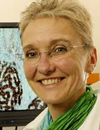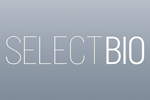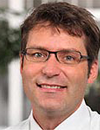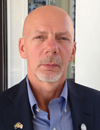08:15 | Registration |
|
Session: Regulatory Environment and Bench to Bedside Process in Regenerative Medicine | Session Sponsors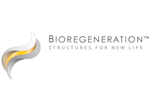 |
| |
09:00 | Welcome and Introduction
Frank Emmrich, Director, TRM Leipzig, Germany
|
09:10 | Bench to Bedside Successes at the TRM Leipzig
Ulrich Sack, Associate Director of Research, TRM Leipzig, Germany
Translation of Regenerative Medicine from bench to bedside depends on customized support to young scientists. Prototypic examples of translational processes from the TRM Leipzig will be presented. |
09:30 | Regulatory Pathways to the Market
Timo Faltus, Investigator, TRM Leipzig, Germany
The presentation illustrates the legal gateways to the European market for (stem) cell based products from (basic) research to market approval. |
10:00 | Successful GxP Practice
Dirk Sawitzky, Quality Manager Non Clinical Test Facility, Universität Leipzig, Germany
The pharmaceutical industry of the European Union maintains high standards of Quality Management in the development, manufacture and control of medicinal products. This is ensured by the principles of “GxP” for “Good Laboratory, Clinical, Manufacturing and Distribution Practice”. |
10:30 | Coffee and Networking in Exhibition Hall |
|
Session: Eye and Legal Application Permission of Innovative Treatments
Chair: Christian Koch |
| |
11:00 | 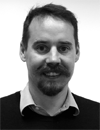 | Keynote Presentation Stem Cells in Retinal Regeneration
Conor Ramsden, Clinical Research Fellow, Institute of Ophthalmology, University College London, United Kingdom
Experimental to clinical transplantation of pluripotent stem cells for cell therapy in retinal disease. |
|
11:30 | Scleral Crosslinking by an Innovative Substance and Irradiation System - A Novel Medical Device for a New Therapeutic Approach
Mike Francke, Investigator, TRM Leipzig, Germany
Scleral collagen crosslinking as a suggested therapeutic approach in ophthalmology induces remodelling processes in scleral tissue. Application of riboflavin and blue light leads to activation of fibroblasts and induces remodelling of the collagen fibril and bundle structures. |
11:50 | Biomaterials Enhanced Regeneration of the Human Cornea
May Griffith, Professor, Linkoping University, Sweden
Biomimetic materials mimicking the extracellular matrix of the human corneal stroma promote stable regeneration of the human cornea. Addition of a second network of polymers to the implants further reinforced the materials to allow for integration into high risk corneas. |
12:10 | Marketing Authorisation Procedure for ATMPs
Matthias Wilken, Head of Drug Regulatory Affairs Europe / Scientific Aspects in Social Law, German Pharmaceutical Industry Association, Germany
The talk is about the legal requirements concerning marketing authorisation procedures in Europe for advanced therapy medicinal products. Beside the centralised marketing authorisation, the certification procedure, the classification procedure and the so-called hospital exemption clause are addressed. |
12:30 | Lunch and Networking in Exhibition Hall |
|
Session: Bone, Cartilage & Muscle
Chair: Christoph Josten |
| |
14:00 | Establishing of a Stem Cell Based Articular Cartilage Graft
Ronny Schulz, Investigator, TRM Leipzig, Germany
The successful development of an advanced therapy medicinal product (ATMP) made of mesenchymal stem cells (MSCs) for the treatment of articular cartilage based on actual EU regulations and clinical recommendations lie within the realm. |
14:20 | Potential of Autologous 3D Adipose Stem Cells Graft for Bone Reconstruction
Denis Dufrane, Professor, Catholic University of Louvain, Belgium
The transformation of autologous adipose stem cells in a 3-dimensional osteogenic graft can open a new way for surgical reconstruction of large bone defect (after tumour resection and pseudarthrosis) with minimal invasive procedure. |
14:40 | Ethical Challenges in Translating ATMPs for Orthopedic Disorders into Clinical Trials and Society
Sophie Niemansburg, PhD Student, University Medical Center Utrecht, Netherlands
In this presentation I will discuss the results of an empirical study on the attitudes, opinions and expectations of biomedical professionals, mainly basic scientists and surgeons, on the ethical issues of translating ATMPs for orthopedic disorders into (early) clinical studies and society. |
15:00 | Genetic Stability and Tumorigenicity within Chondrocyte Cultures using GTG, SKY and Locus-specific FISH
Heidrun Holland, Investigator, TRM Leipzig, Germany
The development of cell-based therapy for clinical studies raises the question whether the application of cell-based products to humans is safe. Therefore, different genetic analyses were performed to show the presence or absence of genetic instabilities. |
15:30 | Coffee and Networking in Exhibition Hall |
|
Session: Clincal Video Tutorial with Planned Life Annotations |
| |
16:00 | Clinical Video Tutorial with Life Annoation
Enal Razvi, Managing Director, Select Biosciences Inc, United States of America
The Clinical Video Tutorial was shot at the SELECTBIO Clinical Translation of Stem Cells Conference, April 21-22, 2014, Palm Desert, California, USA. This practicum was conducted by a number of clinicians who are all board-certified in the United States. The key clinicians performing the adipose tissue harvest were Joseph Purita, MD, and Allan Wu, MD, and this was performed at the La Quinta Surgery Center, Palm Desert. The clinical practicum was designed to demonstrate adipose tissue (fat) harvest procedure in a clinical setting from a patient who had given informed consent for us to videotape this procedure. Subsequent to the fat harvest, we present some of the ex vivo procedures that were performed on the fat, namely the isolation of adipose-derived stem cells. These cells were subsequently injected back into the patient with minimal ex vivo manipulation and no ex vivo culture. The goal of this practicum is to illustrate the methodologies, procedures, and type of environment wherein adipose tissue (fat) extraction takes place and its deployment in regenerative medicine. |



